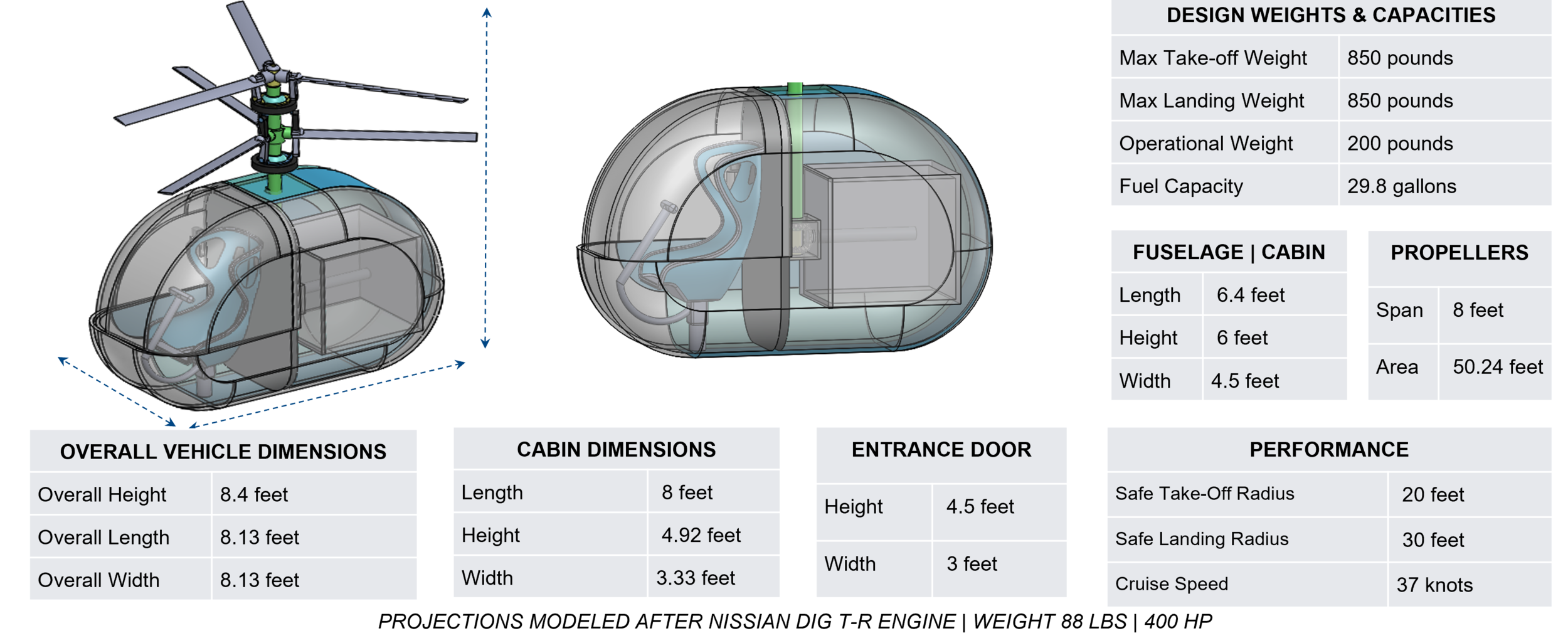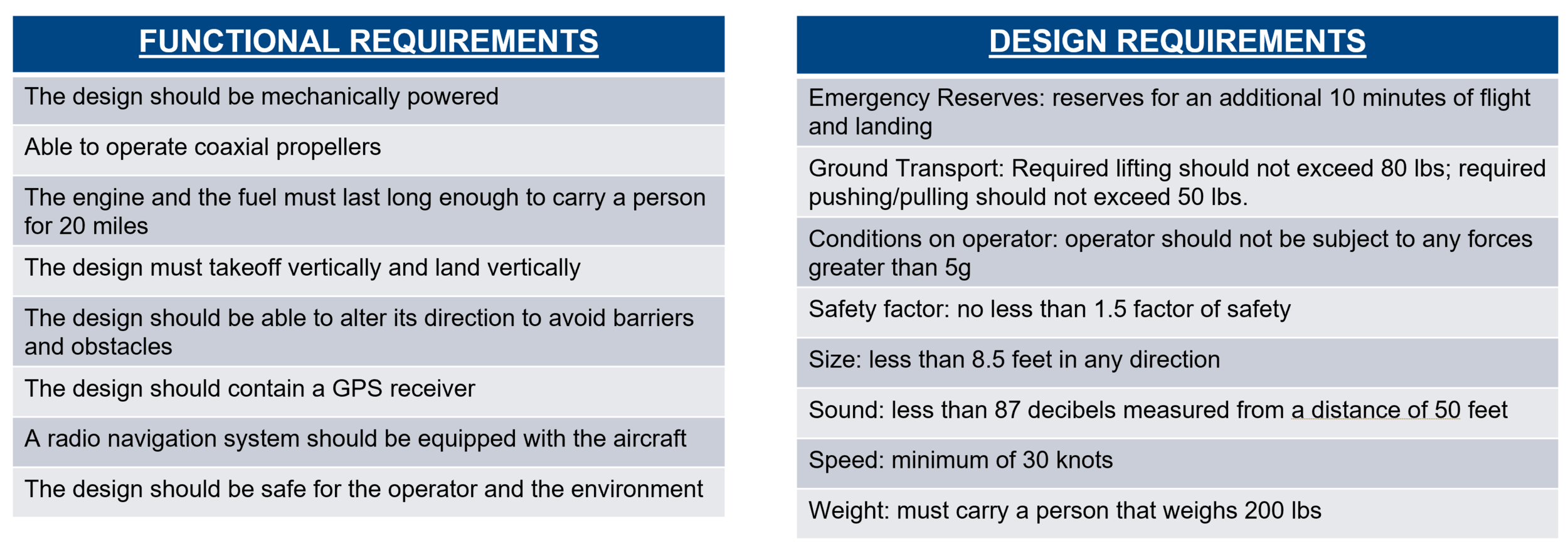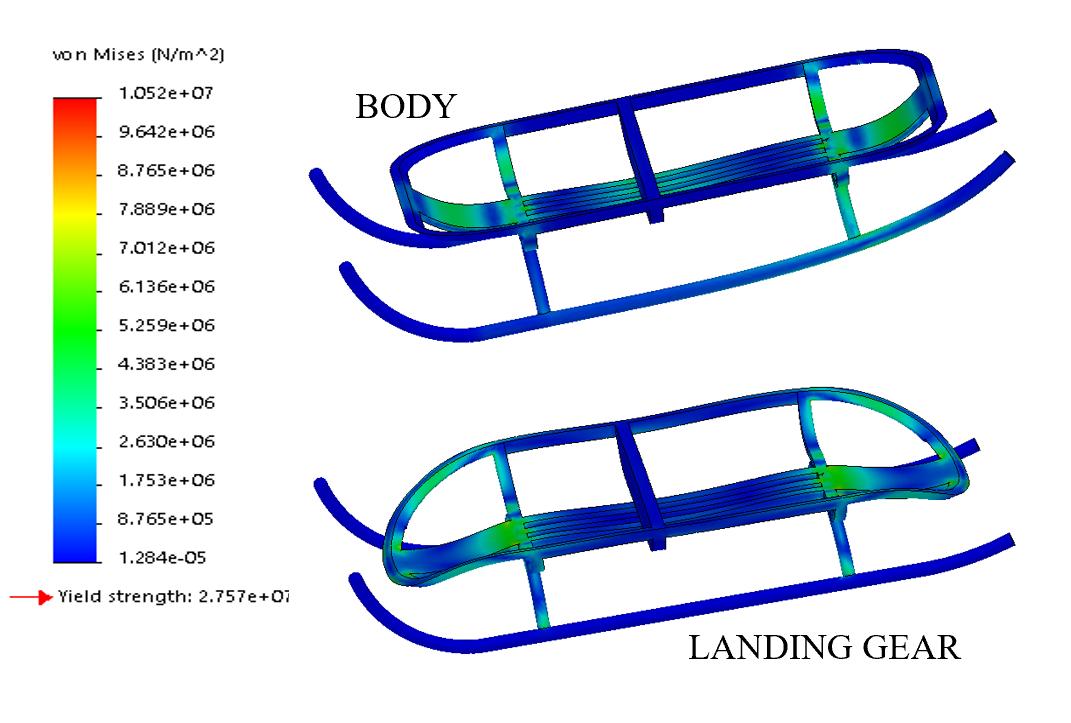BOEING GOFLY CHALLENGE
PROJECT OVERVIEW
Key Challenges: The personal flying device must be safe, quiet, ultra-compact, and near-VTOL—capable of carrying a single person for a distance of 20 miles without refueling or recharging.
Objectives & Goals: Provide efficient VTOL design that meets design validation and criteria design concept/prototype/design consideration.
Design Pros:
Compactness for ease of use >> changing the speed of one rotor will only change horizontal direction and lift
Two separate rotors turn, lift and point up or down when the rpm of one changes, making a more difficult equilibrium
Allows for heavier payload limited in their flight envelope
Net Zero Torque
SPECIFICATIONS & MOVEMENT
Operators will use handlebars to control direction, speed, and height.
At standard flying elevation, the user will engage the suspended handlebars.
Similarly, the handle bars can be pulled (down) and pushed (up) to control the height of the vehicle.
These commands can be used simultaneously ensuring the complete control of the vehicle
Directional handle bars guide, steer, and direct vehicle
Braking system implemented in the swash plates
Forward & backwards motion determines acceleration & deceleration of vehicle
BODY & DESIGN
Swash plate control system allows two coaxial propellers
Transmit power at varying angles at constant rotational speed.
Changes in direction, speed, a height without any hindrances due to parts in friction.
Egg shape decreases the friction drag on the surface area--minimizing resistance.
Allows for better flight efficiency, immovability, and a more compact design.
Minimal blind spots during operation
DESIGN REQUIREMENTS
FA ANALYSIS
FLOW SIMULATION: MAIN BODY
V = 30 mph =13.4112m/s
F
LOW SIMULATION: BLADES
V = 30 mph=13.452 m/s
![[+] ab](http://images.squarespace-cdn.com/content/v1/5dfbf366e9fc410cc144c775/1578988264117-DGFKNVFSFW16T7M4JAB4/stay_positive+logo3.jpg?format=1500w)








